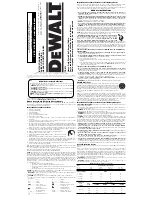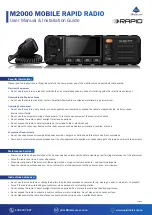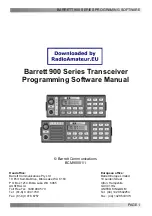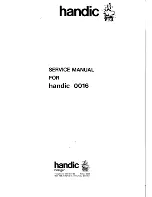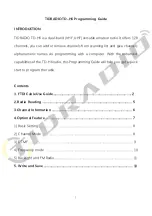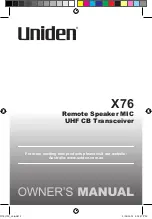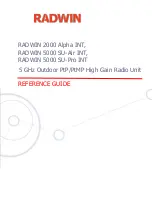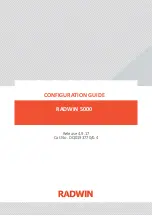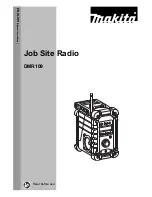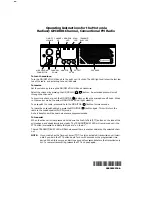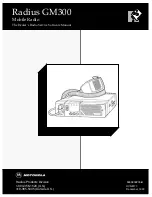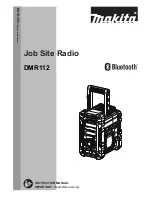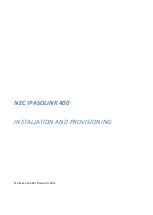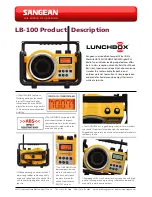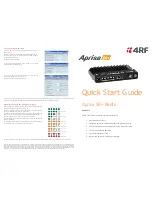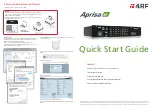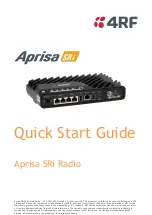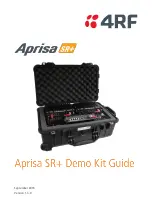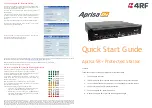
Defi nitions: Safety Guidelines
The definitions below describe the level of severity for each signal word. Please read
the manual and pay attention to these symbols.
DANGER:
Indicates an imminently hazardous situation which, if not avoided,
will
result in
death or serious injury
.
WARNING:
Indicates a potentially hazardous situation which, if not avoided,
could
result in
death or serious injury
.
CAUTION:
Indicates a potentially hazardous situation which, if not avoided,
may
result in
minor or moderate injury
.
NOTICE:
indicates a practice
not related to personal injury
which, if not avoided,
may
result in
property damage
.
IF YOU HAVE ANY QUESTIONS OR COMMENTS ABOUT THIS OR ANY D
E
WALT TOOL, CALL
US TOLL FREE AT:
1-800-4-D
E
WALT (1-800-433-9258)
DC012 Heavy-Duty Work Site Charger/Radio
The DC012 Heavy-Duty Work Site Charger/Radio is a combination AM/FM radio and D
E
WALT
charger. The DC012 will charge most D
E
WALT 7.2 to 18.0 volt NiCd, NiMH, Li-Ion batteries except
for Univolt batteries. Batteries sold separately.
Important Safety Instructions
1. Read these instructions.
2. Keep these instructions.
3. Heed all warnings.
4. Follow all instructions.
5. Do not use this apparatus near water.
6. Clean only with a dry cloth.
7. Do not block any ventilation openings. Install in accordance with the manufacturer’s
instructions.
8. Do not install near any heat sources such as radiators, heat registers, stoves or other
apparatus (including amplifiers) that produce heat.
9. Do not defeat the safety purpose of the polarized or grounding-type plug. A polarized plug has
two blades with one wider than the other. A grounding type plug has two blades and a third
grounding prong. The wide blade or the third prong are provided for your safety. If the provided
plug does not fit into your outlet, consult an electrician for replacement of the obsolete outlet.
10. Protect the power cord from being walked on or pinched particularly at plugs, convenience
receptacles, and the point where they exit from the apparatus.
11. Only use attachments/accessories specified by the manufacturer.
12. Only place radio on a level, stable surface.
13. Unplug this apparatus during lightning storms or when unused for long
periods of time.
14. Refer all servicing to qualified service personnel. Servicing is required when
the apparatus has been damaged in any way, such as power-supply cord or plug is damaged,
liquid has been spilled or objects have fallen into the apparatus, the apparatus has been
exposed to rain or moisture, does not operate normally, or has been dropped.
15. Apparatus shall not be exposed to dripping or splashing and no objects filled with liquids, such
as vases, shall be placed on the apparatus
The lightning flash with arrow head within a triangle is intended to tell the user that parts
inside the product are a risk of electric shock to persons.
The exclamation point within a triangle is intended to tell the user that important operating
and servicing instructions are in the papers with the appliance.
This Class B digital apparatus complies with Canadian ICES-003.
NOTE:
This equipment has been tested and found to comply with the limits for a Class B digital
device, pursuant to Part 15 of the FCC Rules. These limits are designed to provide reasonable
protection against harmful interference in a residential installation. This equipment generates,
uses and can radiate radio frequency energy and, if not installed and used in accordance with
the instructions, may cause harmful interference to ratio communications. However, there is no
guarantee that interference will not occur in a particular installation. If this equipment does cause
harmful interference to radio or television reception, which can be determined by turning the
equipment off and on, the user is encouraged to try to correct the interference by one or more of
the following measures:
• Reorient or relocate the receiving antenna.
•
Increase the separation between the equipment and the receiver.
•
Connect the equipment into an outlet on a circuit different from that to which the receiver
is connected
•
Consult the dealer or an experienced radio/TV technician for help.
NOTICE:
Per FCC Part 15, changes or modifications to this equipment not expressly approved by
D
E
WALT could void your authority to operate this equipment.
WARNING:
To reduce the risk of fire or electric shock, do not expose this apparatus to rain or
moisture. Use only in dry locations.
CAUTION:
To prevent electric shock, match wide blade of plug to wide slot fully insert.
• The label on your tool may include the following symbols. The symbols and their definitions are
as follows:
V ......................volts
A ......................amperes
Hz ....................hertz
W .....................watts
min ..................minutes
....................alternating current
...............direct current
....................alternating or direct current
....................Class I Construction
no .....................no load speed
........................
(grounded)
.....................earthing terminal
....................Class II Construction
.....................safety alert symbol
........................
(double insulated)
BPM .................beats per minute
…/min .............per minute
RPM .................revolutions per minute
...................shock hazard symbol
Important Safety Instructions for All Battery Packs
When ordering replacement battery packs, be sure to include catalog number and voltage.
Consult the chart at the end of this manual for compatibility of chargers and battery packs.
The battery pack is not fully charged out of the carton. Before using the battery pack and charger,
read the safety instructions below. Then follow charging procedures outlined.
READ ALL INSTRUCTIONS
•
Do not charge or use battery in explosive atmospheres, such as in the presence of
flammable liquids, gases or dust.
Inserting or removing the battery from the charger may
ignite the dust or fumes.
• NEVER force battery pack into charger. DO NOT modify battery pack in any way to fit
into a non-compatible charger as battery pack may rupture causing serious personal
injury.
Consult the chart at the end of this manual for compatibility of batteries and chargers.
• Charge the battery packs only in D
E
WALT chargers.
•
DO NOT
splash or immerse in water or other liquids.
• Do not store or use the tool and battery pack in locations where the temperature may
reach or exceed 105°F (40˚C) (such as outside sheds or metal buildings in summer).
DANGER:
Electrocution hazard. Never attempt to open the battery pack for any reason. If battery
pack case is cracked or damaged, do not insert into charger. Do not crush, drop or damage battery
pack. Do not use a battery pack or charger that has received a sharp blow, been dropped, run over
or damaged in any way (i.e., pierced with a nail, hit with a hammer, stepped on). Electric shock or
electrocution may result. Damaged battery packs should be returned to service center for recycling.
NOTE:
Battery storage and carrying caps are provided for use whenever the battery is out of the
tool or charger. Remove cap before placing battery in charger or tool.
WARNING: Fire hazard. Do not store or carry battery so that metal objects
can contact exposed battery terminals.
For example, do not place battery in
aprons, pockets, tool boxes, product kit boxes, drawers, etc., with loose nails,
screws, keys, etc. without battery cap.
Transporting batteries can possibly
cause fires if the battery terminals inadvertently come in contact with
conductive materials such as keys, coins, hand tools and the like.
The US Department of
Transportation Hazardous Material Regulations (HMR) actually prohibit transporting batteries in
commerce or on airplanes (i.e., packed in suitcases and carry-on luggage) UNLESS they are
properly protected from short circuits. So when transporting individual batteries, make sure that
the battery terminals are protected and well insulated from materials that could contact them and
cause a short circuit.
SPECIFIC SAFETY INSTRUCTIONS FOR NICKEL CADMIUM (NiCd) OR NICKEL METAL
HYDRIDE (NiMH)
•
Do not incinerate the battery pack even if it is severely damaged or is completely worn
out.
The battery pack can explode in a fire.
•
A small leakage of liquid from the battery pack cells may occur under extreme usage
or temperature conditions.
This does not indicate a failure.
However, if the outer seal is broken:
a. and the battery liquid gets on your skin, immediately wash with soap and water for several
minutes.
b. and the battery liquid gets into your eyes, flush them with clean water for a minimum of
10 minutes and seek immediate medical attention. (
Medical note:
The liquid is 25-35%
solution of potassium hydroxide.)
SPECIFIC SAFETY INSTRUCTIONS FOR LITHIUM ION (LI-ION)
•
Do not incinerate the battery pack even if it is severely damaged or is completely
worn out.
The battery pack can explode in a fire. Toxic fumes and materials are created when
lithium ion battery packs are burned.
•
If battery contents come into contact with the skin, immediately wash area with
mild soap and water.
If battery liquid gets into the eye, rinse water over the open eye for
15 minutes or until irritation ceases. If medical attention is needed, the battery electrolyte is
composed of a mixture of liquid organic carbonates and lithium salts.
•
Contents of opened battery cells may cause respiratory irritation.
Provide fresh air. If
symptoms persists, seek medical attention.
WARNING:
Burn hazard. Battery liquid may be flammable if exposed to spark or flame.
The RBRC™ Seal
The RBRC™ (Rechargeable Battery Recycling Corp
oration) Seal on the nickel
cadmium, nickel metal hydride or lithium ion batteries (or battery packs) indicate that
the costs to recycle these batteries (or battery packs) at the end of their useful life
have already been paid by D
E
WALT. In some areas, it is illegal to place spent nickel
cadmium, nickel metal hydride or lithium ion batteries in the trash or municipal solid
waste stream and the RBRC™ program provides an environmentally conscious
alternative.
RBRC™ in cooperation with D
E
WALT and other battery users, has established programs in the
United States and Canada to facilitate the collection of spent nickel cadmium, nickel metal hydride
or lithium ion batteries. Help protect our environment and conserve natural resources by returning
the spent nickel cadmium and nickel cadmium, nickel metal hydride or lithium ion batteries to an
authorized D
E
WALT service center or to your local retailer for recycling. You may also contact your
local recycling center for information on where to drop off the spent battery.
RBRC™ is a registered trademark of the
Rechargeable Battery Recycling Corporation.
Important Safety Instructions for All Battery Chargers
SAVE THESE INSTRUCTIONS:
This manual contains important safety and operating instructions
for the DC012 charger/radio.
• Before using charger, read all instructions and cautionary markings on charger, battery pack,
and product using battery pack.
DANGER:
Electrocution hazard. 120 volts are present at charging terminals. Do not probe with
conductive objects. Electric shock or electrocution may result.
WARNING:
Shock hazard. Do not allow any liquid to get inside charger. Electric shock may result.
CAUTION:
Burn hazard. To reduce the risk of injury, charge only D
E
WALT rechargeable batteries.
Other types of batteries may burst causing personal injury and damage.
CAUTION:
Under certain conditions, with the charger plugged in to the power supply, the
exposed charging contacts inside the charger can be shorted by foreign material. Foreign materials
of a conductive nature such as, but not limited to, steel wool, aluminum foil, or any buildup of metallic
particles should be kept away from charger cavities. Always unplug the charger from the power
supply when there is no battery pack in the cavity. Unplug charger before attempting to clean.
•
DO NOT attempt to charge the battery pack with any chargers other than the ones in
this manual.
The charger and battery pack are specifically designed to work together.
•
These chargers are not intended for any uses other than charging D
E
WALT
rechargeable batteries.
Any other uses may result in risk of fire, electric shock or electrocution.
•
Do not expose charger to rain or snow.
•
Pull by plug rather than cord when disconnecting charger.
This will reduce risk of damage
to electric plug and cord.
•
Make sure that cord is located so that it will not be stepped on, tripped over, or
otherwise subjected to damage or stress.
•
Do not use an extension cord unless it is absolutely necessary.
Use of improper
extension cord could result in risk of fire, electric shock, or electrocution.
•
An extension cord must have adequate wire size (AWG or American Wire Gauge) for
safety.
The smaller the gauge number of the wire, the greater the capacity of the cable, that
is 16 gauge has more capacity than 18 gauge. When using more than one extension to make
up the total length, be sure each individual extension contains at least the minimum wire size.
Use of Extension Cords
Only use grounded extension cords that are rated for outdoor use and equipment with a third-wire
ground.
When a long extension cord is used to connect a worklight/charger or tool to a generator, a
voltage drop occurs. The longer the cord, the greater the voltage drop. This results in less voltage
being supplied to the worklight/charger or tool and increases the amount of current (amp) draw or
reduces performance. A heavier cord with a larger wire size will reduce the voltage drop. Be sure
to choose a cord that will supply enough voltage to operate your tool or worklight/charger. The
tables below indicate appropriate gauge for extension cords and the voltage drop caused by the
use of extension cords, given different electrical loads.
WARNING:
Keep electrical cords in good condition. Do not use worn, bare, or frayed cords
because they can cause electrical shock.
WARNING:
Operating equipment at low voltage can cause it to overheat. Using an
excessively long extension cord can cause the cord to overheat.
Minimum gauge for Extension Cord Sets
Volts
Total Length of Cord in Feet
120V
0–25
26–50
51–100
101–150
240V
0–50
51–100
101–200
201–300
Ampere Rating
AWG
0–10 (A)
16
16
14
14
10–13 (A)
16
16
14
12
13–16 (A)
14
14
12
12
16–25 (A)
12
12
12
10
25–30 (A)
10
10
10
Not Recommended
Extension
Cord
Length
Amp
Load
Voltage Drop
16 AWG
14 AWG
12 AWG
10 AWG
25 Foot
10A
2.0
1.3
0.8
0.5
15A
3.0
1.9
1.2
0.8
20A
4.0
2.5
1.6
1.1
30A
6.0
3.8
2.3
1.6
INSTRUCTION MANUAL
GUIDE D’UTILISA
TION
MANUAL DE INSTRUCCIONES
DC012
Heavy-Duty W
ork Site Charger/Radio
Poste radio/chargeur de chantier à service intensif
Radio/cargador para emplazamientos de trabajo pesado
INSTRUCTIVO DE OPERACIÓN, CENTROS DE SER
VICIO Y
PÓLIZA DE GARANTÍA.
ADVER
TENCIA:
LÉASE ESTE
INSTRUCTIVO ANTES DE USAR EL PRODUCTO.
D
E
WALT Industrial Tool Co., 701 East Joppa Road, Baltimore, MD 21286
(DEC13) Part No. N377871 DC012 Copyright © 2009, 2013 D
E
WALT
The following are trademarks for one or more D
E
WALT power tools: the yellow and black color scheme; the “D” shaped air
intake grill; the array of pyramids on the handgrip; the kit box configuration; and the array of lozenge-shaped humps on the
surface of the tool.
If you have questions or comments, contact us.
Pour toute question ou tout commentaire, nous contacter
.
Si tiene dudas o comentarios, contáctenos.
1-800-4-D
E
W
A
L
T
• www
.dewalt.com

